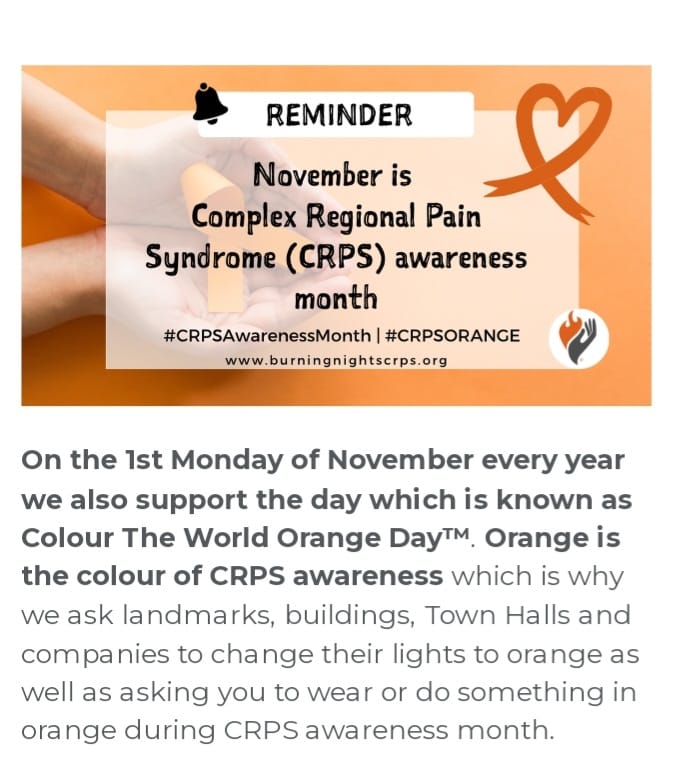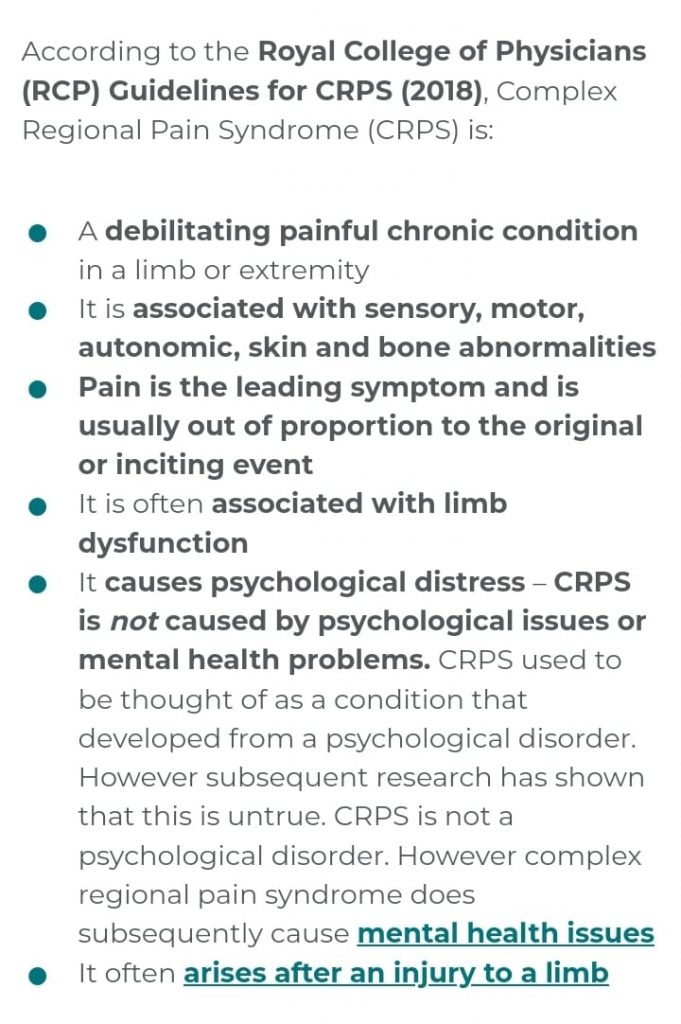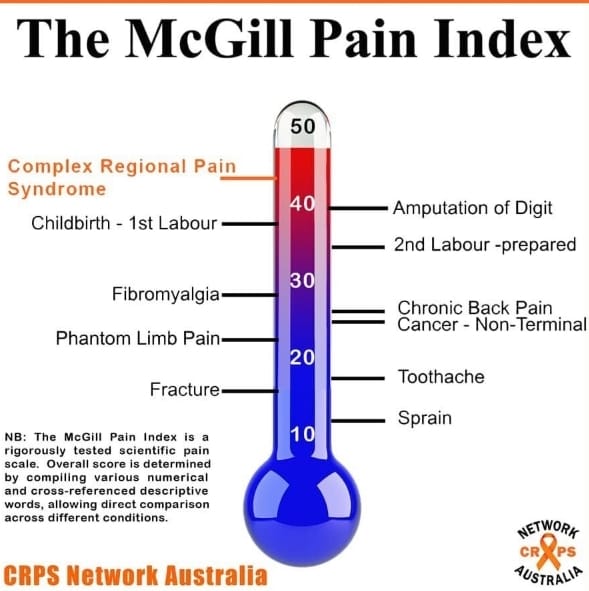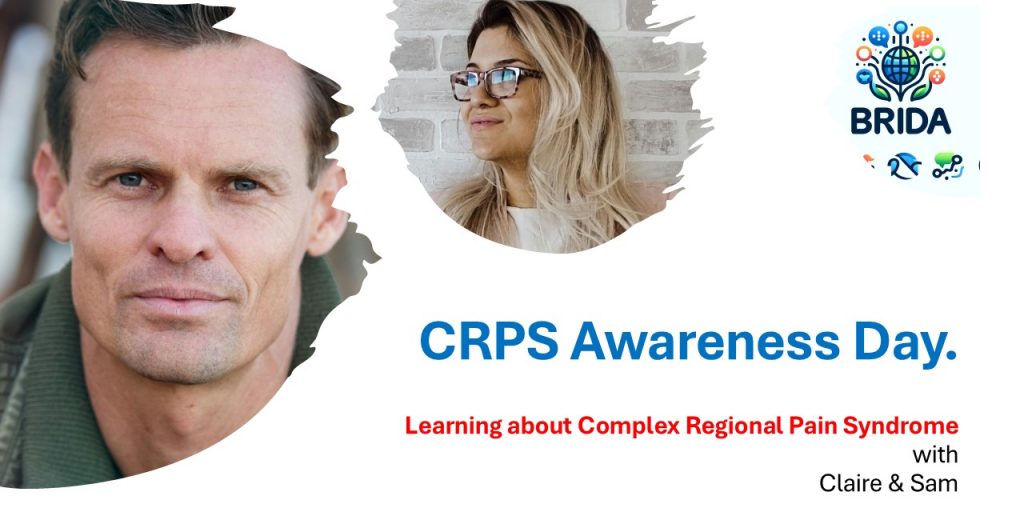
We raise awareness about Complex Regional Pain Syndrome (CRPS). CRPS is a chronic pain condition that often develops after an injury, even a seemingly minor one, and is disproportionately severe. The McGill Pain Index illustrates how CRPS pain ranks extremely high, exceeding even the pain of childbirth, chronic back pain, and amputation. Beyond pain, CRPS manifests through physical symptoms like changes in skin temperature, colour, and texture, as well as psychological impacts such as anxiety, depression, and sleep difficulties. We highlight the challenges faced by those with CRPS in navigating daily life, emphasizing the importance of early diagnosis and multi-faceted treatment approaches including physical therapy, medication, and psychological support. We encourage listeners to spread awareness and support those affected by CRPS, recognizing that even small gestures of understanding and empathy can make a difference.
Transcript
Sam
Hey everybody. Uh Sam here with Claire.
Claire
Hi everyone.
Sam
And uh we’re from the Brida community. And we thought today being CRPS awareness day, you know. We should maybe talk a little bit about CRPS, especially given what Frank’s wife has been going through.
Claire
It’s a good idea. You know, it’s something that we should all be aware of.
Sam
Yeah. So, um
Claire
a lot of people haven’t even heard of it. Complex regional pain syndrome.
Sam
Yeah. So, maybe we should start by kind of just like, you know, what is CRPS?
Claire
Yeah. So, um complex regional pain syndrome, CRPS. It’s a chronic pain condition. And it usually affects one limb. So an arm, a leg, hand or foot, usually after an injury. And it’s not just like, you know, a little bit of pain. It’s very, very severe pain.
Sam
Okay. And when we say after an injury, like what kind of injuries are we talking?
Claire
It could be something really minor like a sprain or a fracture.
Sam
Oh wow.
Claire
Even after surgery, sometimes it can develop.
Sam
So it’s not even necessarily like a major like a major injury. It could be something fairly
Claire
And that’s the scary part
Sam
That it’s not proportionate to the injury. The pain is much more severe.
Claire
Yeah. I know there’s um like a chart. I think it’s called the McGill pain index. Um that kind of ranks different pains. Where does CRPS fall on that?
Sam
Yeah. So CRPS ranks very high on that. 42 out of 50. Which is higher than child birth. Chronic back pain. Even amputation of a digit.
Claire
Gosh, that’s a staggering number. it is. That really puts it into perspective. I mean that’s a really really intense pain. But it’s more than just pain, right?
Sam
It is. Yeah. So there are lots of other symptoms. Um changes in skin temperature. So the limb can feel very hot or very cold. Changes in colour. So it could become red or blue or blotchy. And texture as well. It could be shiny or swollen. Um, and it could be really really sensitive to touch. Even just like clothing or a light breeze can be excruciating.
Claire
Gosh. And you know all of this along with the intense pain it must make just regular daily life so difficult for people, really difficult you know simple things like getting dressed or you know preparing food even taking a shower can be so painful and so difficult.
Sam
and things like you know work or hobbies or even just relationships like,
Claire
all of that is affected you know it can be very isolating because you can’t do the things that you used to enjoy and and people who don’t understand the condition might not be as supportive
Sam
and just the the toll that constant pain must take on your mental health. Like how do people even sleep when they’re in so much pain?
Claire
Yeah, sleep can be really difficult and a lot of people with CRPS also experience anxiety and depression.
Sam
Yeah, it makes sense. Um so you knowing all of this like what can be done to help people who are suffering from this?
Claire
Yeah. So there’s no cure for CRPS. Unfortunately, but there are things that can be done, to manage the symptoms and improve their quality of life. Um, so one thing that’s often really helpful is physical therapy and occupational therapy. So that helps people regain strength, and flexibility and function.
Sam
So really just kind of rehabilitation and learning to live with it a little bit more. What other things are there?
Claire
Um, medications can also be helpful for managing the pain, although finding the right combination of medications can be difficult. Um, and then psychological support is really important as well, because as we’ve said, it’s a really difficult condition to live with. Um, so therapy can help people to cope with the emotional and mental toll of chronic pain.
Sam
So really kind of just equipping people with the tools to
Claire
just manage it.
Sam
And to, you know, feel hopeful and right and keep going.
Claire
Yeah. It sounds like a multiaceted approach is really key here. Yes, it is. It’s not just one thing.
Sam
No, it’s a combination. And early diagnosis is really important. The sooner people can get treatment, the better the chances of managing the symptoms effectively. So that’s really why raising awareness like we’re doing today is so important. Just so people know about this. And they can get help sooner, rather than later.
Claire
Yeah. The more people understand CRPS, the better we are as a community to support those who are affected by it.
Sam
And you know that support can look like a lot of different things. You know, just listening to people. Yeah. Offering practical help. Just spreading awareness like we’re doing today.
Claire
Absolutely. Anything, helps.
Sam
We hope you found this information useful.
Claire
I hope so, too.
Sam
I’m Sam.
Claire
I’m Claire.
Sam
See you soon. Bye-bye.
Claire
Bye.



